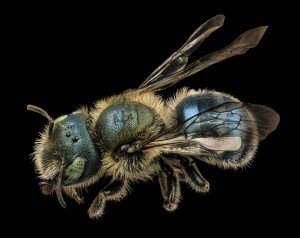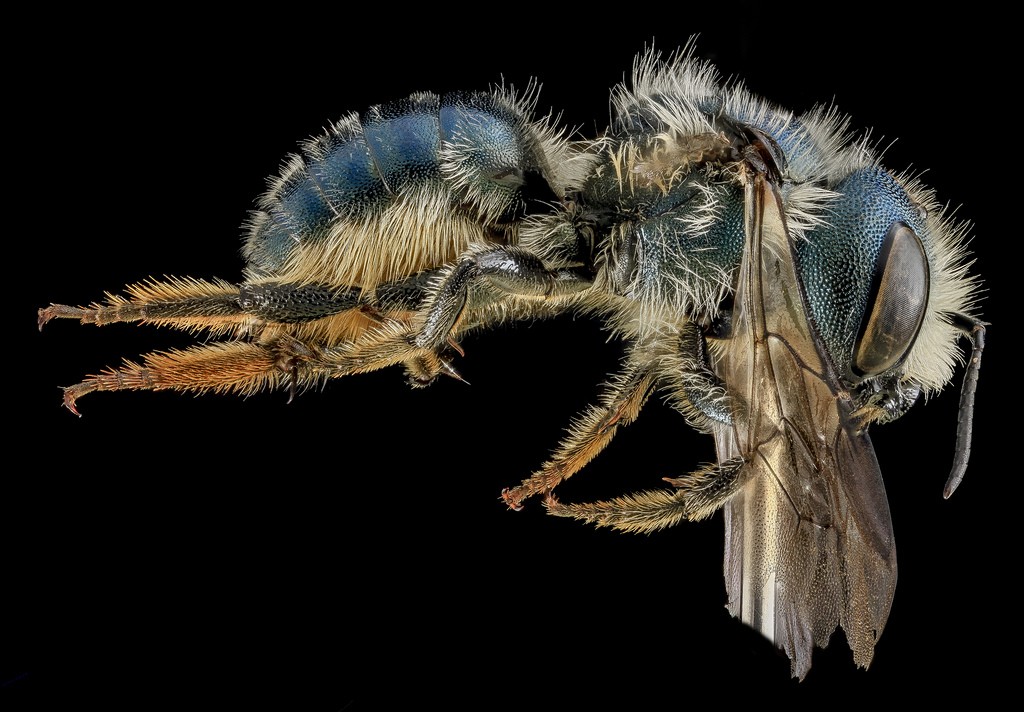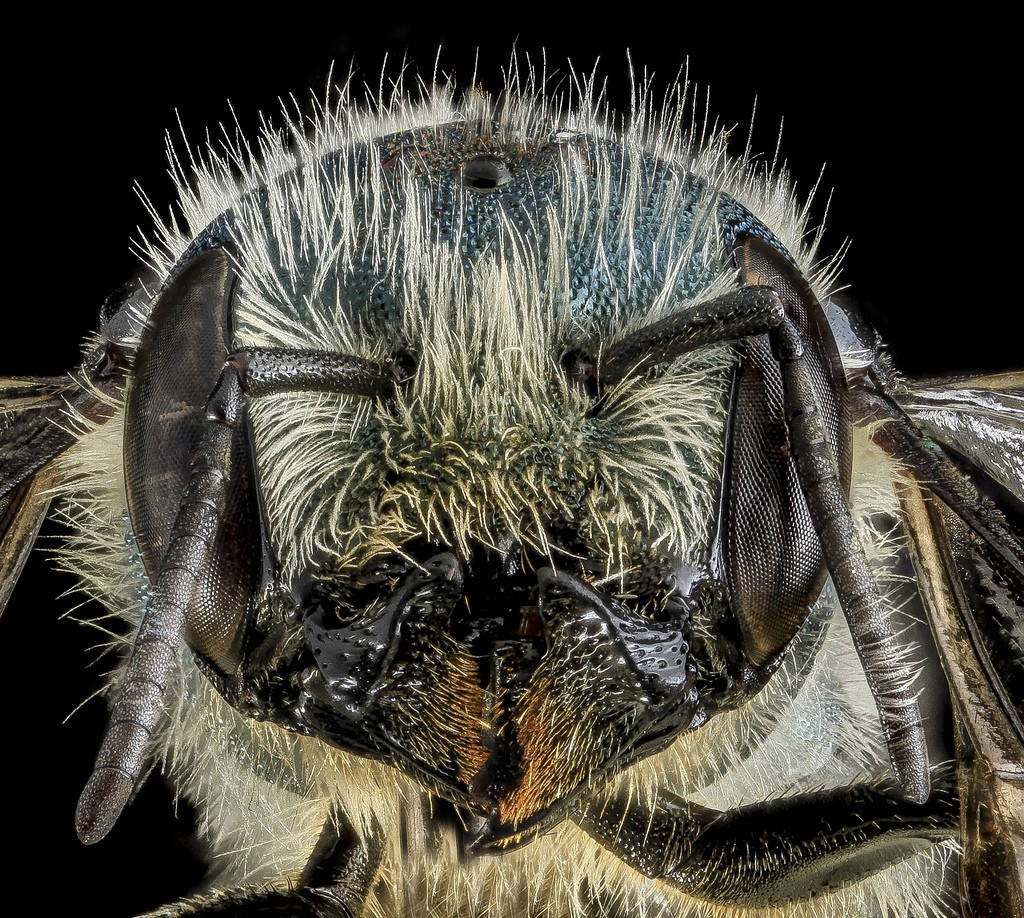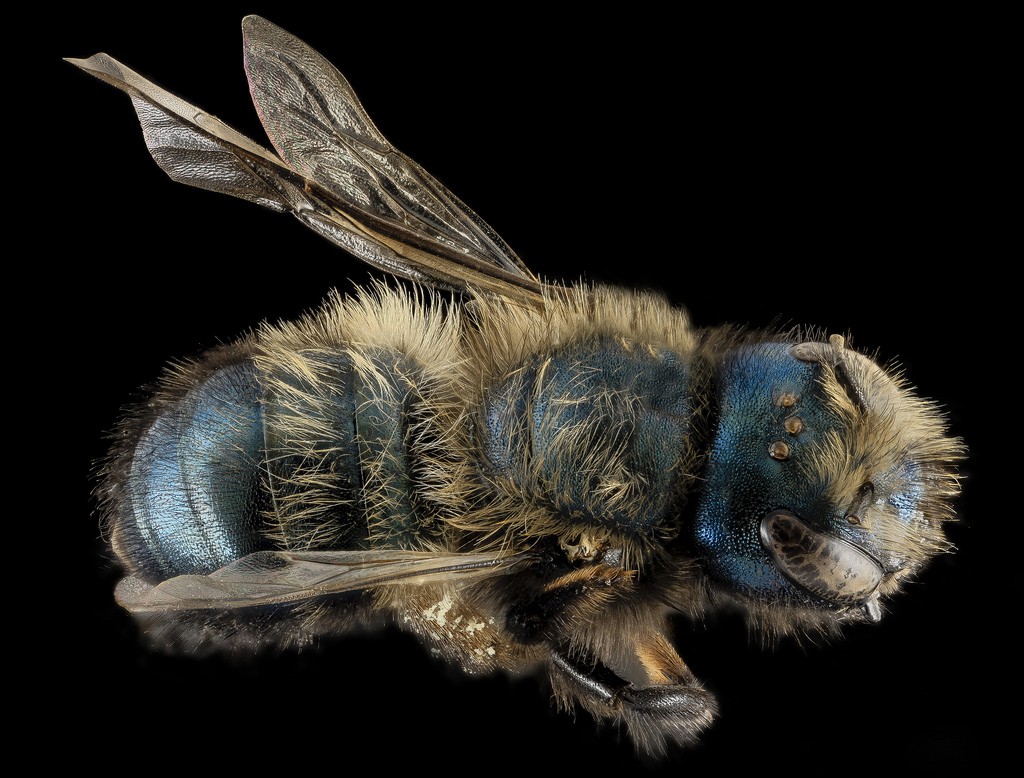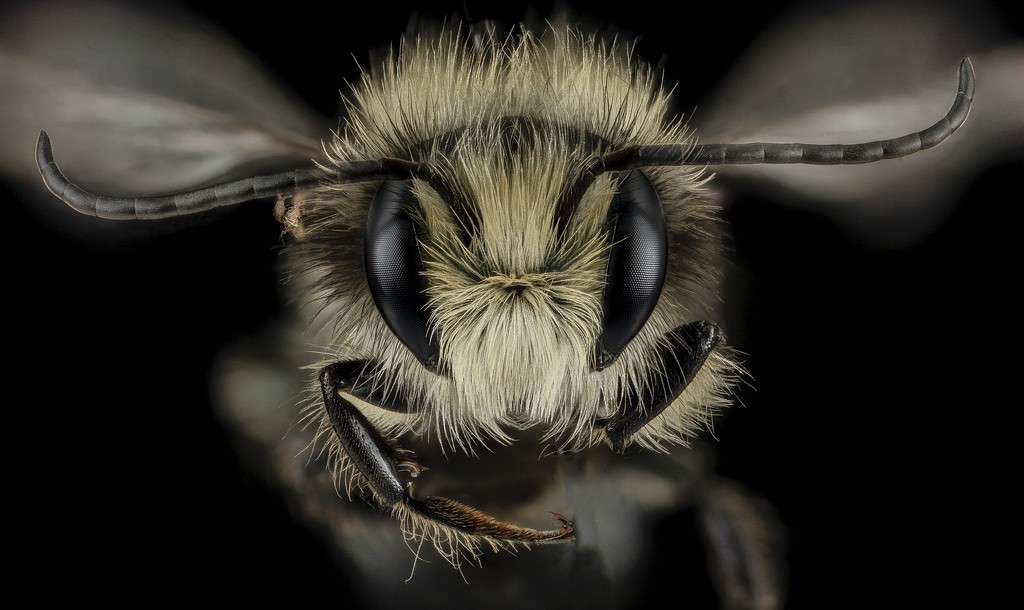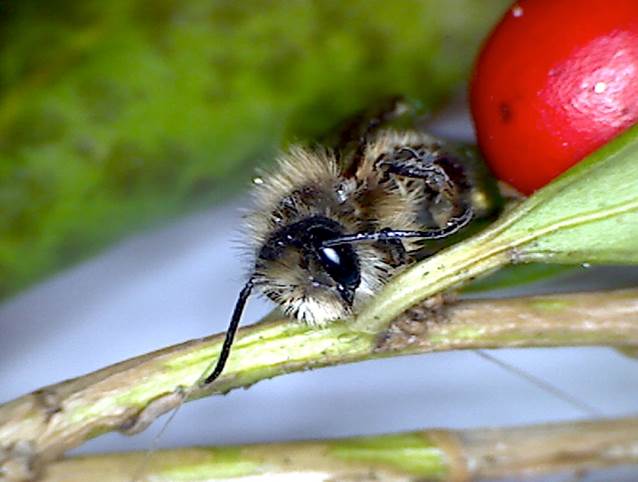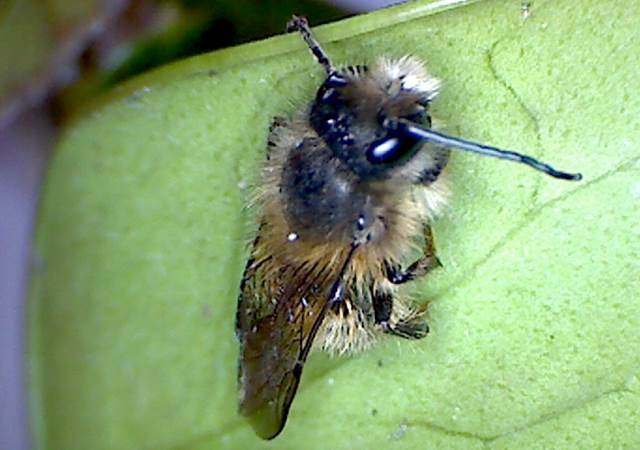Mason Bees (Genus Osmia)
Size: Small to Medium (6-12 mm) {Size Comparison – the average honeybee is 13 mm}
Color: Metallic Blue; Dull Metallic Green, Metallic Black
Type of Flight: Very Fast, Fluid-Flight; “Fighter jet” type of flight
Distinguishing Characteristics:
Best method to identify the Family Megachilidae is that the pollen carrying hairs (scopa) in females are not on the legs as in other bees, but on the underside of the abdomen.
(1) Females have a dense mass of pollen-carrying hairs (scopa) located on the bottom-side of the abdomen; the hairs can be yellow, white, brown, or black.
(2) Males have long white hairs; females mostly hairless, except on scopa.
(3) Fast flying, small metallic blue/green bees
(4) Mason bees nest in hollow cavities, such as reeds
(Wooden bee houses with holes are ideal nesting areas for mason bees)
Abundance in Georgia: Uncommon
Typically Found in Georgia: Late February to May (Osmia are some of the first bees to emerge)
Pollination Value: Very High (an important pollinator of “early spring” agricultural crops)
(Several species are “managed” to serve as the main pollinator in commercial orchards)
Plants Associated with: Early flowering plants (Generalist – not specific to any type of plant)
Nesting Habitat: These bees are cavity nesters; Mason bees nest in hollow reeds or in holes created by wood boring insects.
Classification: Family: Megachilidae Genus: Osmia
Number of Species in Georgia: 19*
Number of Species in United States: 140
* Several new state records were discovered by our Georgia Native Bee Survey
Photos taken by Sam Droege and staff at the USGS Bee Inventory and Monitoring Laboratory (Used with permission)
–> Click on the photo to enlarge the image
Photos taken by Mark Schlueter
.
